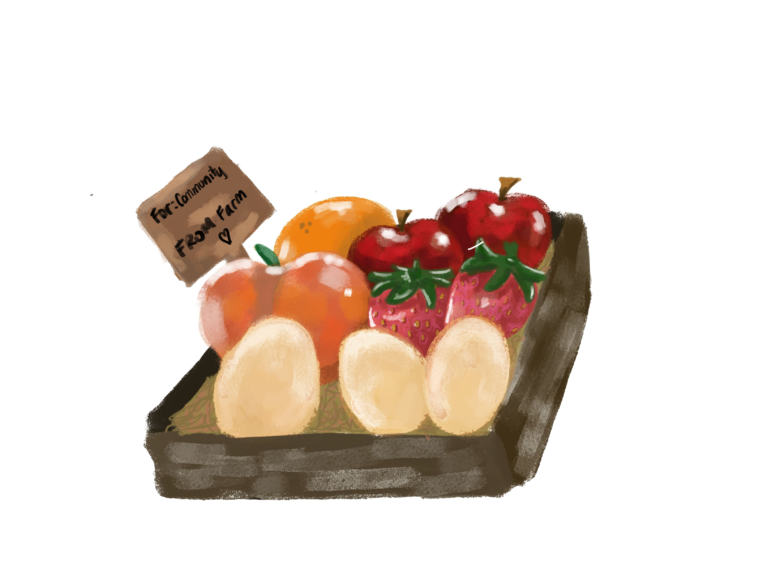
Since the 1700s, the typical American meal has evolved from homegrown goods to being sourced from the colorful aisles of a chain supermarket. While this change has brought increased productivity and ease, groups of people have also looked back to buying locally.
These numerous aisles entice customers with appealing packaging, signaling products optimally engineered for human consumption. Yet it’s the bare appearance of one-of-a-kind local, fresh produce that attracts some people interested in eating unprocessed foods.
“They have all kinds of vegetables that the supermarkets wouldn’t have [such as] purple carrots [and] squash,” said junior Kabir Sulur when talking about Crystal Springs Produce, a grocery store that sources mainly from local farms. “It forces you to eat healthier if you go to a place [selling] only vegetables and fruits.”
For others, the product quality of local produce straight from farms is more reassuring than supermarket chains.
“One time from a grocery store I bought a bag of fruit and it had bugs on the inside,” said junior Noah Miller. “It was the reason why we switched [to buying local].”
Freshman Sofia Cabrera eats dried apricots directly from her aunt’s farm when she visits.
“They’re all sweet, there’s no sour ones,” Cabrera said. “It’s hard on the outside but mushy on the inside … It’s a hundred percent better [than grocery store bought ones].”
Some grocery stores, such as Whole Foods, stock their shelves with locally owned brands, but this can come with price premiums. A study conducted in 2022 by researchers at University of California, Nutrition Policy Institute found that while conventionally grown produce in farmers markets was more expensive, organic produce was actually cheaper when buying directly from the source.
“Knowing that my food was ethically, not only grown, but then harvested, to me, feels [like] an investment in humanity”
Growing food has many costs that are not immediately obvious in store. Going to buy directly from farms can honor those roots.
“[The best part of buying from local farms] is meeting the people,” Miller said. “They’re really nice and do a lot of hard work. Some days I’ll go help out with their work if I’m free … [I help so] more people can buy food from them and that can help out the farm.”
Jennifer Seif, an advanced standing modern world history teacher, buys a share of a Community Supported Agriculture subscription – a farm-run program that sends a box of seasonal produce weekly to families – from Fifth Crow Farm. Her interest was sparked by meeting the family running the farm ten years ago at a farmers market.
“Despite [CSAs] costing a little bit more, one of my favorite things [is that] … every single farm worker is well cared for,” Seif said. “You know those seasonal farm workers have stability and they have health care … Knowing that my food was ethically, not only grown, but then harvested, to me, feels [like] an investment in humanity … All of our small actions build to big movements and change.”
Community support can not only encompass large regional areas, but also small nearby ones. Project Pantry is a club that started at Borel Middle School. They take food donations from companies or local farms specializing in collecting defective produce and give it out to students. Junior Kate Sato and her friends hope to continue at Aragon this year.
“It’s something that everyone should be aware of – how fortunate they are to live [in the Bay Area] and be provided [with] these foods,” Sato said. “The fact that we can help people that don’t have the resources we do is a good thing.”
Supporting local farmers and businesses doesn’t have to be an extreme shift. Junior Alex Camarena gets a small portion of his food from farmer’s markets.
“I would recommend [shopping at the farmers market] to my friends because you can find new shops you didn’t know about [and] try out new foods or new dishes,” Camarena said. “[My favorite part] is the pop-ups and the ready-to-eat foods.”
There are many ways people can try out local foods, including going to the farmers market, trading home-grown foods, or joining a produce group. Anyone can become an urban scavenger among the trove of options offered by grocery stores and farmers alike.




